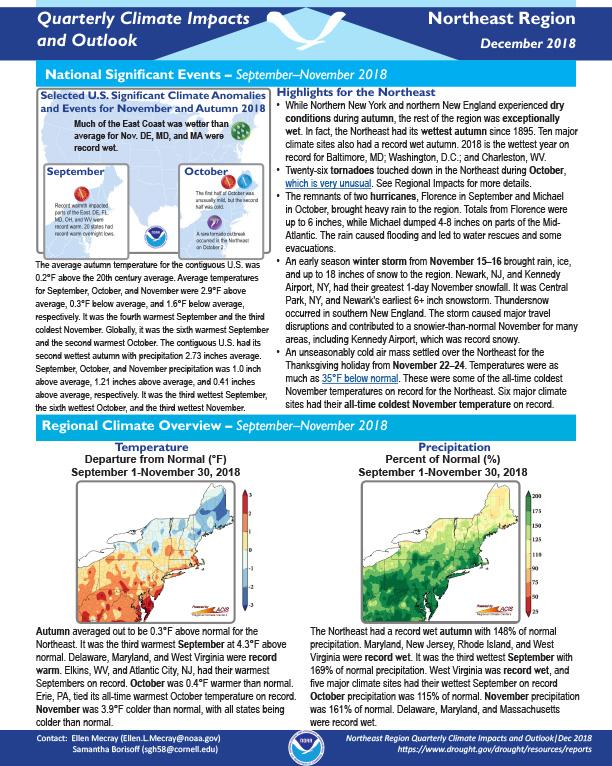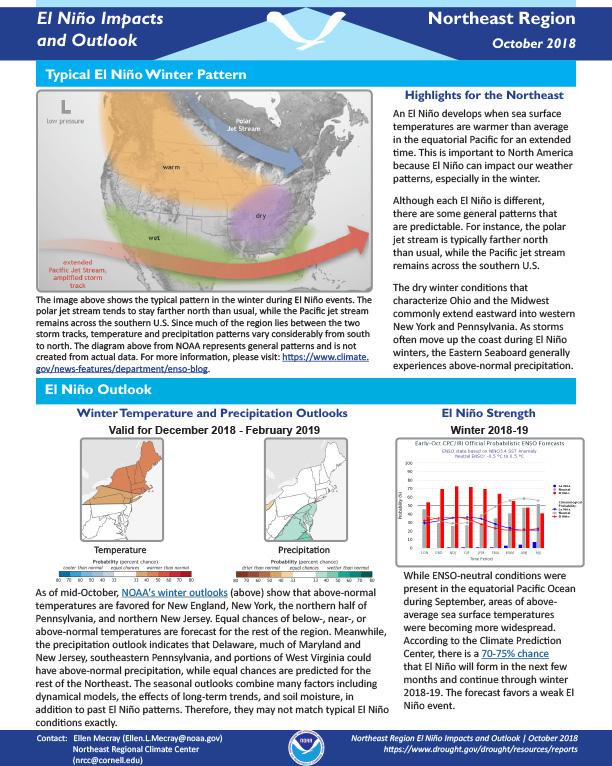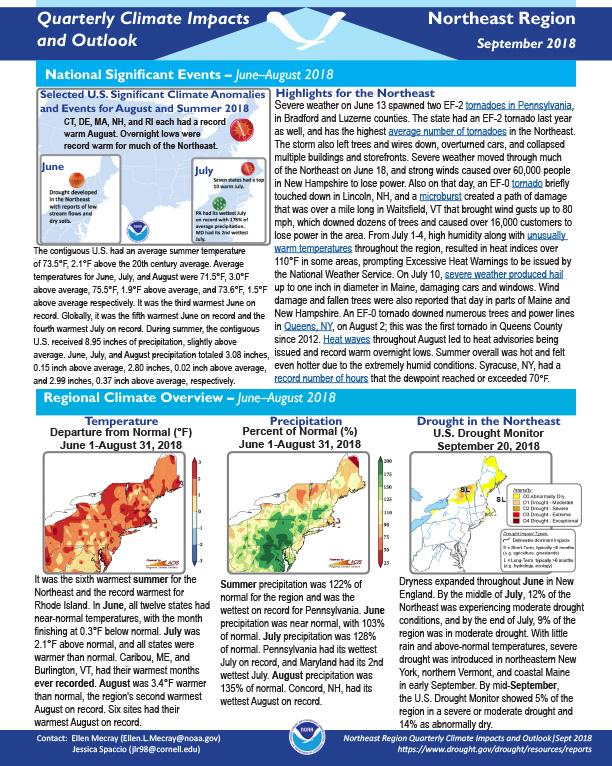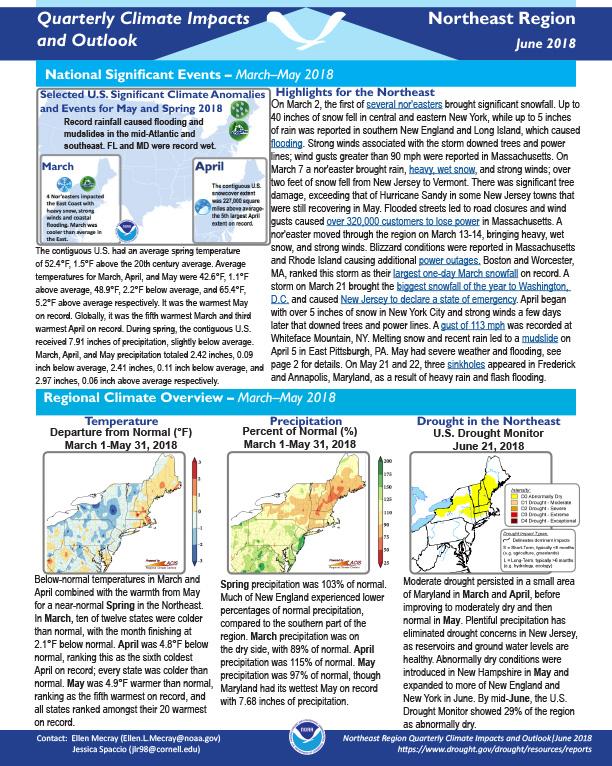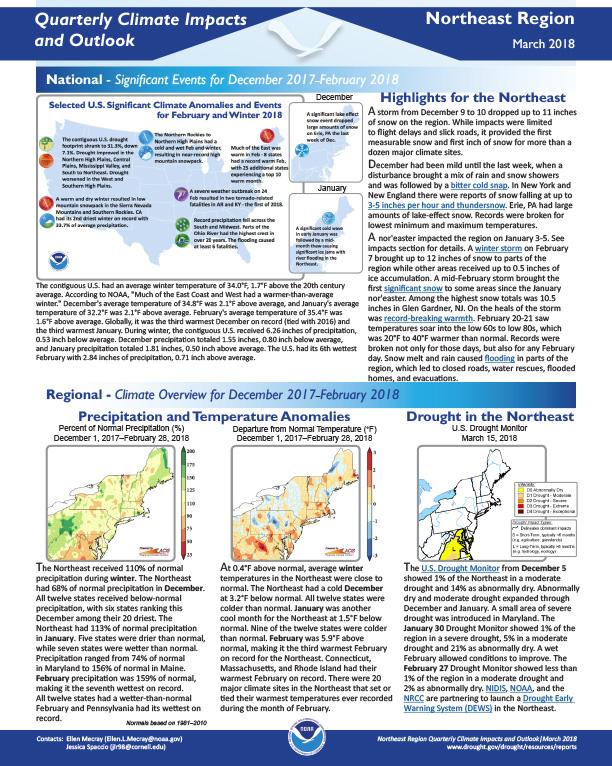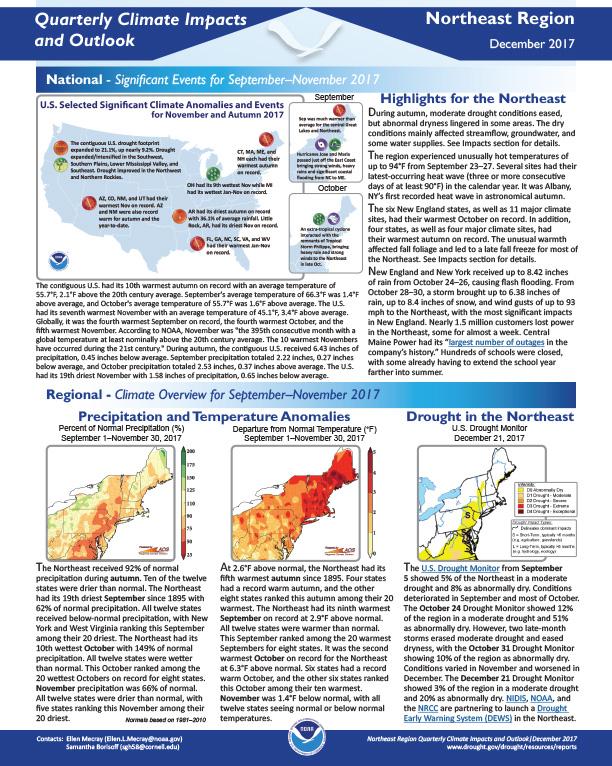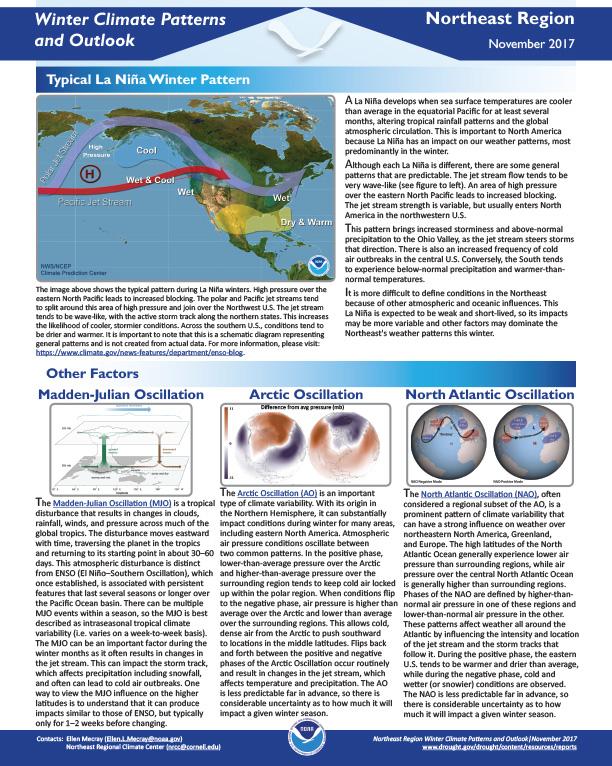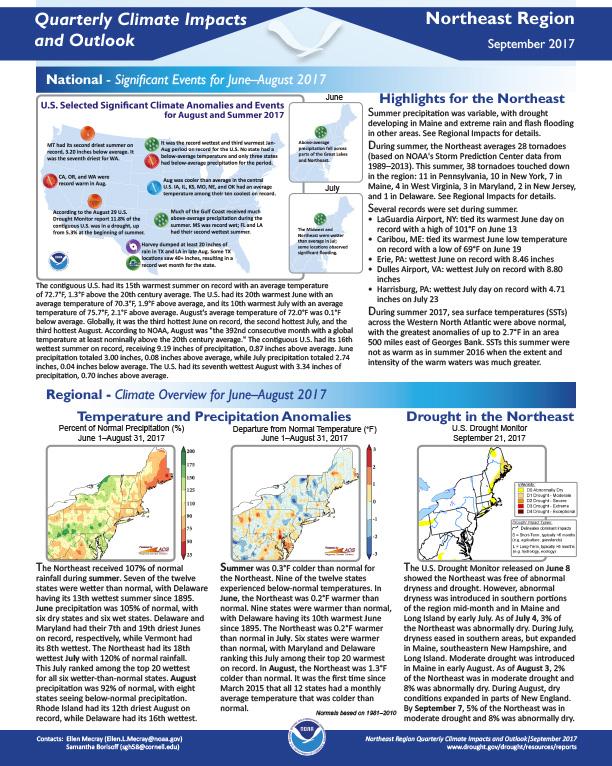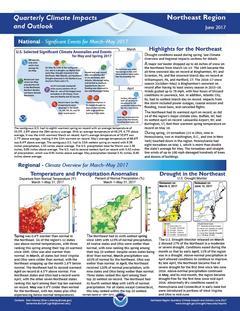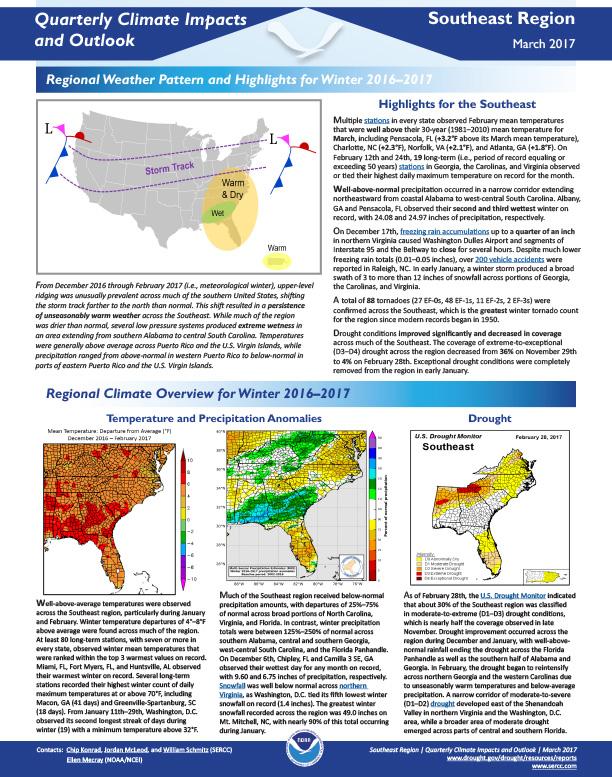For the latest forecasts and critical weather information, visit weather.gov.
Quarterly Climate Impacts and Outlook for the Northeast Region for September – November 2018. Dated December 2018.
Autumn averaged out to be 0.3°F above normal for the Northeast. The Northeast had a record wet autumn with 148% of normal precipitation.
Provides a definition of El Nino; the outlook for winter temperatures and precipitation; potential winter impacts; and a look back at previous El Nino winters.
NOAA’s Regional Climate Services Program created these Outlooks to inform the public about climate impacts within their respective regions. Each regional report contains easy-to-understand language, and anyone can access them through the Drought Portal at https://www.drought.gov/drought/resources/reports.
Quarterly Climate Impacts and Outlook for the Northeast Region for June – August 2018. Dated September 2018.
It was the sixth warmest summer for the Northeast and the record warmest for Rhode Island. Summer precipitation was 122% of normal for the region and was the wettest on record for Pennsylvania.
Quarterly Climate Impacts and Outlook for the Northeast Region for March – May 2018. Dated June 2018.
On March 2, the first of several nor'easters brought significant snowfall. Up to 40 inches of snow fell in central and eastern New York, while up to 5 inches of rain was reported in southern New England and Long Island, which caused flooding. Strong winds associated with the storm downed trees and power lines; wind gusts greater than 90 mph were reported in Massachusetts.
Quarterly Climate Impacts and Outlook for the Northeast Region for December 2017 – February 2018. Dated March 2018.
A storm from December 9 to 10 dropped up to 11 inches of snow on the region. While impacts were limited to flight delays and slick roads, it provided the first measurable snow and first inch of snow for more than a dozen major climate sites.
Quarterly Climate Impacts and Outlook for the Northeast Region for September – November 2017. Dated December 2017.
During autumn, moderate drought conditions eased, but abnormal dryness lingered in some areas. The dry conditions mainly affected streamflow, groundwater, and some water supplies. See Impacts section for details.
Describes typical La Niña winter patterns, Madden-Julian Oscillation, Arctic Oscillation, North Atlantic Oscillation; give outlook for winter temperatures and precipitation.
Quarterly Climate Impacts and Outlook for the Northeast Region for June – August 2017. Dated September 2017.
Summer precipitation was variable, with drought developing in Maine and extreme rain and flash flooding in other areas. During summer, the Northeast averages 28 tornadoes (based on NOAA's Storm Prediction Center data from 1989–2013). This summer, 38 tornadoes touched down in the region: 11 in Pennsylvania, 10 in New York, 7 in Maine, 4 in West Virginia, 3 in Maryland, 2 in New Jersey, and 1 in Delaware.
Quarterly Climate Impacts and Outlook for the Northeast Region for March – May 2017. Dated June 2017.
Quarterly Climate Impacts and Outlook for the Southeast Region for December 2016 – February 2017. Dated March 2017.


